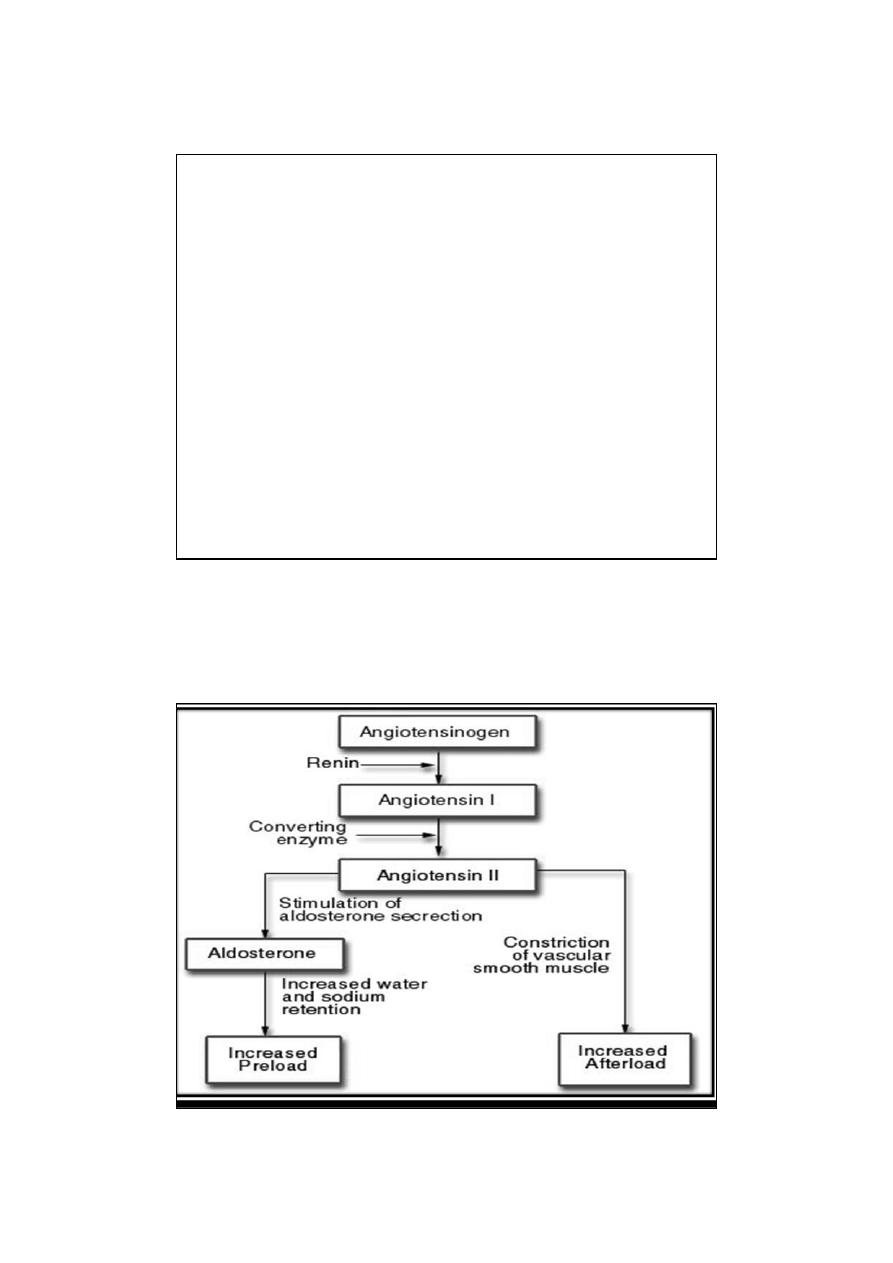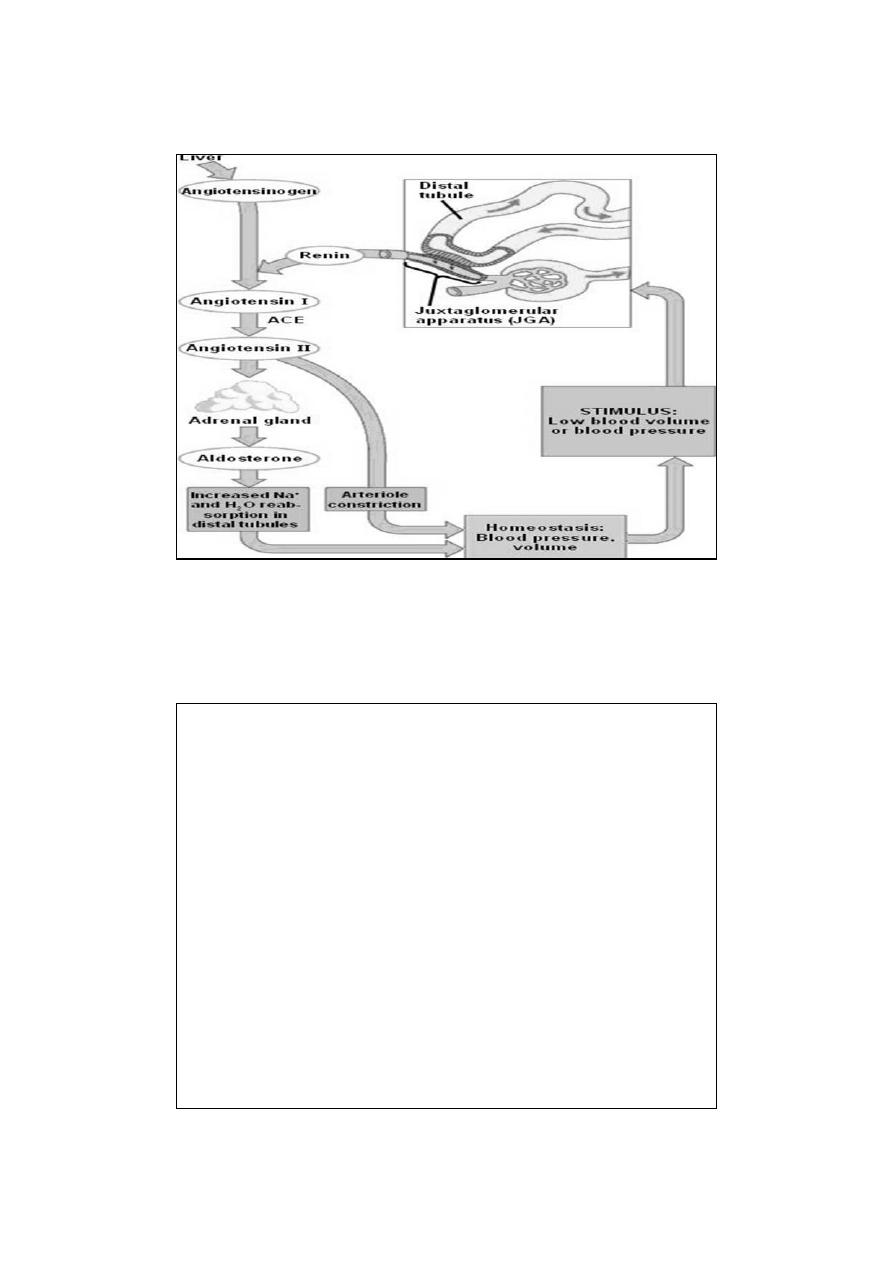
5/4/2015
Adrenal cortex
By pharmacist
Maha A. Hamdi
i

5/4/2015
•
1-The zona glomerulosa→ aldosterone
•
The secretion of these cells is controlled mainly by
the
•
1-extracellular fluid concentrations of angiotensin II
•
2-potassium,
•
both of which stimulate aldosterone secretion.

5/4/2015
•
2- The zona fasciculata→glucocorticoids
cortisol and corticosterone, & small amounts
of adrenal androgens and estrogens
•
controlled by the hypothalamic-pituitary axis
via adrenocorticotropic hormone (ACTH).
•
3- The zona reticularis→adrenal androgens
dehydroepiandrosterone (DHEA) and
androstenedione, small amounts of estrogens
and some glucocorticoids
•
Controlled byACTH &cortical androgen-
stimulating hormone, released from the
pituitary

5/4/2015
Mineralocorticoids
•
Aldosterone (very potent, 90 % of all mineralocorticoid
activity)
•
Deoxycorticosterone (1/30 as potent as aldosterone, but very
small quantities secreted)
•
Corticosterone (slight mineralocorticoid activity)
•
9α-Fluorocortisol (synthetic, slightly more potent than
aldosterone)
•
Cortisol (very slight mineralocorticoid activity, but large
quantity secreted)
•
Cortisone (slight mineralocorticoid activity)
Glucocorticoids
•
Cortisol (very potent, 95 % of all glucocorticoid activity)
•
Corticosterone (4 %total glucocorticoid activity,)
•
Cortisone (almost as potent as cortisol)
•
Prednisone (synthetic, 4times as potent as cortisol)
•
Methylprednisone (synthetic,5times as potent as cortisol)
•
Dexamethasone (synthetic, 30 times as potent as cortisol)

5/4/2015
Adrenocortical Hormones Are Bound to
Plasma Proteins
•
synthesized from cholesterol provided
by low-density lipoproteins (LDL) in
the circulating plasma.
•
95% of cortisol bind to plasma
globulin→cortisol-binding globulin or
transcortin
•
Less %bound to albumin
•
cortisol has a relatively long half-life of
•
60 - 90 minutes
•
60 % of circulating aldosterone combines
with the plasma proteins,
•
40 % is in the free form
•
short half-life of about 20 minutes

5/4/2015
Adrenocortical Hormones metabolism
•
adrenal steroids are degraded mainly in
the liver and conjugated especially to
glucuronic acid and, sulfates, 25 %of these
conjugates are excreted in the bile and the
feces.
•
The remaining conjugates formed enter
the circulation are highly soluble in the
plasma, and filtered by the kidneys and
excreted in the urine
Functions of the Mineralocorticoids-
Aldosterone
•
1-Aldosterone ↑Renal Tubular
Reabsorption of Sodium and Secretion of
Potassium .
•
excess aldosterone in the plasma ↑
sodium in the ECF while ↓ potassium.
•
mineralocorticoids are "lifesaving" portion
of the adrenocortical hormones.

5/4/2015
Functions of the Mineralocorticoids-
Aldosterone
•
2- Aldosterone ↑Extracellular Fluid
Volume and Arterial Pressure .
•
3- Aldosterone Stimulates Sodium and
Potassium Transport in Sweat Glands,
Salivary Glands, and Intestinal Epithelial
Cells
Regulation of Aldosterone Secretion
•
1-↑ potassium ion concentration in the ECF greatly
↑aldosterone secretion.
•
•
2-↑ angiotensin II concentration in ECF also greatly
↑aldosterone secretion.
•
•
3-↑ sodium ion concentration in ECF very slightly
↓aldosterone secretion.
•
•
4-ACTH has little effect in controlling the rate of secretion
in most physiological conditions.

5/4/2015
Functions of the Glucocorticoids
•
1-Stimulation of Gluconeogenesis →↑glycogen storage
liver.
•
2-Decreased Glucose Utilization by Cells .
•
3- Elevated Blood Glucose Concentration and "Adrenal
Diabetes."
•
4-Reduction in Cellular Protein
•
5-Cortisol Increases Liver and Plasma Proteins
•
6-Increased Blood Amino Acids

5/4/2015
Functions of the Glucocorticoids
•
7- Mobilization of Fatty Acids
•
8- Cortisol Is Important in Resisting Stress and Inflammation
•
9- Cortisol Blocks the Inflammatory Response to Allergic
Reactions
•
10- Effect on Blood Cells and on Immunity in Infectious
Diseases

5/4/2015
Regulation of Cortisol Secretion
•
corticotropin-releasing factor (CRF) is secreted
into capillary plexus of the hypophysial portal
system in the median eminence of the
hypothalamus and carried to the anterior
pituitary gland,
•
it induces ACTH secretion from anterior pit.,
•
effect of ACTH on the adrenocortical cells is to
activate adenylyl cyclase in the cell membrane.
then induces the formation of cAMP in the cell
cytoplasm, reaching its maximal effect in about 3
minutes
Regulation of Cortisol Secretion
•
Cortisol has direct negative feedback effects on
•
(1) the hypothalamus to decrease the formation of
CRF.
•
(2) the anterior pituitary gland to decrease the
formation of ACTH.

5/4/2015

5/4/2015
Circadian Rhythm of Glucocorticoid Secretion
•
secretory rates of CRF, ACTH, and cortisol are high
in the early morning but low in the late evening,(20
μg/dl -5 μg/dl ).
•
This effect results from a 24-hour cyclical alteration
in the signals from the hypothalamus ,
•
The changes in daily sleeping habits, the cycle
changes correspondingly
Circadian Rhythm of Glucocorticoid Secretion
•
measurements of blood cortisol levels are
meaningful only when expressed in terms of the
time in the cycle at which the measurements are
made

5/4/2015
Adrenal Androgens
•
adrenal androgens (the most important of which is
dehydroepiandrosterone, have only weak effects in
humans.
•
some of the adrenal androgens are converted to
testosterone
